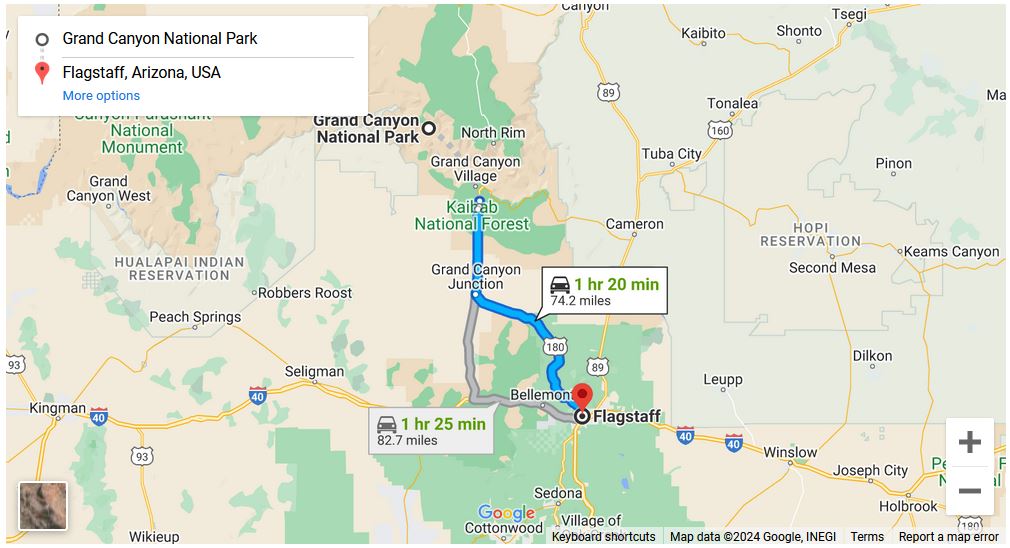The journey from the Grand Canyon to Flagstaff offers travelers a captivating transition from the awe-inspiring landscapes of one of the world’s most iconic natural wonders to the charming mountain town nestled in the heart of northern Arizona. This scenic route provides opportunities for exploration, relaxation, and discovery as visitors make their way from the depths of the Grand Canyon to the pine-covered mountains surrounding Flagstaff.
Starting from the Grand Canyon, travelers depart from the South Rim, where they have marveled at the breathtaking vistas and geological wonders of this immense canyon. As they leave behind the towering cliffs and winding river valleys, travelers are treated to panoramic views of the surrounding desert landscape, with its vast expanses of red rock formations, sagebrush plains, and towering buttes.
The journey from the Grand Canyon to Flagstaff takes travelers through the scenic landscapes of northern Arizona, passing through the Kaibab National Forest and the Coconino National Forest, two vast wilderness areas known for their towering pine forests, rugged mountains, and abundant wildlife. Along the way, travelers may encounter elk, deer, and other wildlife as they traverse the winding mountain roads and scenic byways that wind through the forests.
As travelers approach Flagstaff, they are greeted by the sight of the San Francisco Peaks, a cluster of volcanic mountains that rise majestically above the surrounding landscape. The highest peak, Humphreys Peak, towers over 12,000 feet above sea level, offering stunning views of the surrounding mountains and valleys. The San Francisco Peaks are a popular destination for outdoor enthusiasts, with opportunities for hiking, skiing, mountain biking, and wildlife viewing in the surrounding forests and wilderness areas.
Upon arrival in Flagstaff, travelers are welcomed by the town’s charming downtown area, with its historic buildings, tree-lined streets, and vibrant atmosphere. Flagstaff is known for its lively arts scene, with numerous galleries, theaters, and music venues showcasing the work of local artists and performers. Visitors can explore the town’s eclectic shops and boutiques, dine at world-class restaurants, or relax at one of the many cafes and coffee shops that line the streets.
Flagstaff is also home to a variety of cultural attractions and historic sites that offer insights into the town’s rich history and heritage. The Museum of Northern Arizona, located on the outskirts of town, features exhibits on the natural and cultural history of the region, including displays on Native American art, archaeology, and ecology. The Riordan Mansion State Historic Park offers guided tours of a historic mansion built in the early 20th century, providing a glimpse into the lives of Flagstaff’s early settlers and pioneers.
For outdoor enthusiasts, Flagstaff offers a wide range of recreational opportunities, with access to nearby national parks, forests, and wilderness areas. Visitors can explore the nearby Walnut Canyon National Monument, home to ancient cliff dwellings and archaeological sites, or hike the scenic trails of the Coconino National Forest, which offers breathtaking views of the surrounding mountains and valleys.
In conclusion, the journey from the Grand Canyon to Flagstaff offers travelers a captivating adventure through the diverse landscapes and natural wonders of northern Arizona. Whether exploring the scenic beauty of the San Francisco Peaks, immersing themselves in the town’s rich history and culture, or embarking on outdoor adventures in the surrounding wilderness, visitors to Flagstaff are sure to be enchanted by the town’s charm and beauty. As a gateway to the Grand Canyon and the surrounding natural wonders, Flagstaff remains a timeless destination that captures the spirit of the American West.

